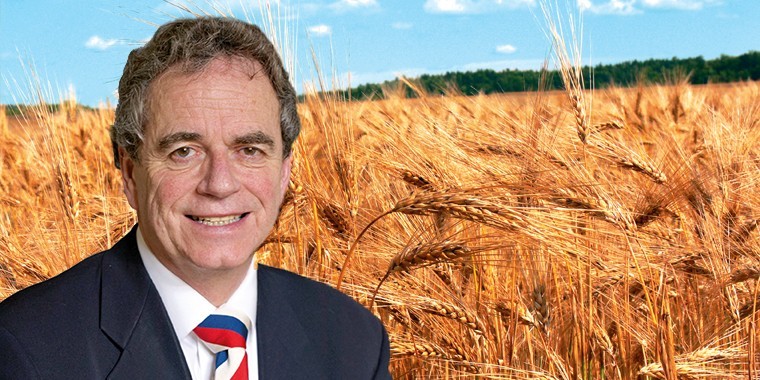Another old trade anecdote that gets hauled out when completely unpredictable price increases engulf you is “the trend is your friend”. Well it jolly well isn’t if you are a compounder, miller or merchant that’s caught short! Working for the UK’s only national, farmer-owned grain marketing and arable inputs co-operative, I’m pleased to say that the farmer has benefitted most from these high prices. And why not, after suffering probably the worst combination of planting and growing conditions ever seen, followed in many cases by poor harvest weather?
But I hear you ask: “Why in these anticipated circumstances would anyone in the trade sell the market short? Why wouldn’t a miller or compounder have covered their forward requirements against expected production?” Well, there are two or three reasons; firstly, for once the “big picture” forecasters got something right, because the world in 2020 had the biggest wheat, maize, and soya harvest ever. So, end users could have been forgiven for believing that there would be plenty of supply somewhere. Secondly the pandemic, starting last March with a ’fall off the cliff’ in demand for some foodstuffs (bakery goods, beer, vegetable oil, ethanol), suggested unemployment on a big scale, and a recession was expected to follow. So many manufacturers and end users began to de-stock. No one could see any real recovery in some sales until late in 2021.
Well, apart from a couple of early months, the much expected “demand destruction” didn’t happen. With a vaccine expected from the beginning of 2021, we saw some of these hard hit products recovering much earlier. While the UK trade expected wheat to be in short supply, spring barley plantings were up 30%. So there should have been no shortage of barley, particularly malting barley, or so we thought. Even when rain in the middle of August ruined half the malting crop, that only meant more feed being added to the already large exportable surplus. Finally, dear old Brexit dictated that sales of barley to the EU had to be completed by the 31 December to avoid penalty. So forward sales were made before the whole grain complex took off in price. Despite this, some boats were not executed because of last minute congestion at UK ports.
Keeping with the old crop, UK wheat futures jumped £7 per tonne in one day on 11 December. This was because Russia strongly indicated that it intends to reduce its wheat export quota by 2.5 million tonnes and apply an export tax of £20 per tonne from the middle of February. This is to try to counter domestic price inflation of wheat, flour and bread. This spooked the big hedge fund shorts and end users; three days later it lost most of that gain, but all world buyers are now uncomfortable, despite the record crops. For once this had nothing to do with China as it’s distorted practically every commodity market, from metals, coal, barley, maize, soya and even wheat, with insatiable demand.
It’s ironic that in a year of plentiful supplies and what should have been less consumption because of the pandemic, it was actually demand which drove the market, not lack of product. As I presaged in my last article, there was nothing to stop wheat reaching new market high levels, and it already has. So if you are lucky enough to have some grain left to sell, keep cashing it in. New crop must be the focus now, but as I said last time there’s no rush.
In my own crop marketing cooperative, comparisons show that in the past year, properly managed pools, with farmer input, together with our market tracker, have in most cases outperformed individual farm sales. We are seeing greater commitment to these two risk management products. Looking back over last year, there were no forward sales made which have not been exceeded by subsequent price rises. In the past, sellers, whether farmers or the trade, reckoned that if they made a forward sale and the market later fell below that price they had got the market right. What we saw in the past year is that it’s been impossible to identify when the top of the market has been reached. Making successful predictions about events you cannot control, like weather, politics or Covid-19, is foolhardy, so forget about trying to get the market right and concentrate on not getting it wrong.
At these high values you can afford to make smaller but incremental price sales. If you have a more normal crop they are good prices to be wrong at, or scrap the crystal ball and commit it to a pool or tracker and let the professionals take the responsibility.
Wishing you a healthy and prosperous new year.




